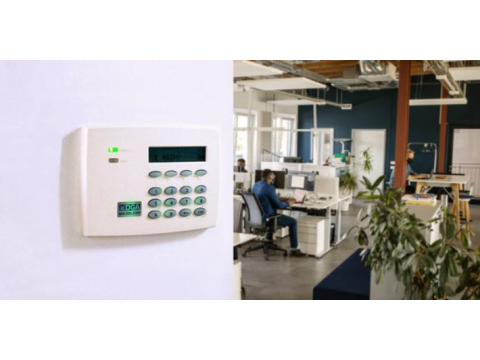Office Security Systems Overview
Modern offices require reliable security and fire systems to protect valuable equipment, sensitive information, and employees. Depending on your office's size and location, you can choose between:
- Centralized monitoring (PCO)
- Autonomous systems
- GSM-enabled alarms
For fire safety, automatic fire alarm systems (AFAS) are mandatory for all office spaces under regulatory guidelines. Below, we explore the options for office security systems and provide tips for choosing the right solutions.
Office Security Systems
1. Centralized Monitoring Systems (PCO)
These systems are the most reliable, as they provide round-the-clock monitoring and rapid response in case of a breach. A centralized monitoring service (e.g., PCO) includes:
- Professional installation and maintenance.
- Immediate dispatch of security teams during alarms.
- Potential liability coverage by the security provider.
2. Autonomous Security Systems
Autonomous systems are a budget-friendly option, ideal for offices within business centers with physical security staff. They rely on local alarms (sound and light) to deter intruders.
Key Components of Autonomous Systems:
- Magnetic contact sensors for doors and windows.
- Motion detectors for interior areas.
- Sound and light sirens for deterrence.
3. GSM Security Systems
GSM systems send alerts to your mobile device, allowing you to monitor your office remotely. Some systems also integrate video surveillance for added security.
Advantages of GSM Systems:
- Affordable and easy to install.
- Immediate alerts to your mobile phone.
- Expandable with additional sensors and cameras.
Pro Tip: Consider GSM systems with built-in video capabilities for visual confirmation during alarms.
Fire Alarm Systems for Offices
Fire safety regulations mandate the installation of fire alarm systems in all office spaces. The two main types are:
- Threshold Systems: Basic systems that detect smoke or heat and trigger alarms.
- Addressable Systems: Advanced systems that pinpoint the exact location of the fire for faster response.
Choosing Between Systems:
- Small Offices: Threshold systems may suffice.
- Large Offices: Addressable systems offer better monitoring and quicker responses.
Installation Tips:
- Use certified devices to meet safety standards.
- Consult a professional to ensure proper placement and coverage.
Installing Office Security Systems
1. Early Detection Setup
For maximum protection, set up sensors to detect:
- Door openings or forced entry.
- Window breakage or tampering.
This configuration triggers alarms at the earliest stages of intrusion, providing more time for response.
2. Simplified Setup
For smaller offices or lower-risk locations, a basic setup includes:
- Door sensors.
- Motion detectors in key areas.
3. Wireless Systems
Wireless systems are ideal for preserving office aesthetics. They are quick to install and easy to scale but can be more expensive.
Pro Tip: Verify compatibility when adding new sensors to existing wireless systems.
4. Addressable Systems
Addressable systems are beneficial for larger offices with multiple rooms and employees. They allow for:
- Individual zone monitoring.
- Differentiated access levels for staff.
- Event logging for audits and investigations.
Conclusion
Office security systems are essential for safeguarding your business assets. Whether you need a fire alarm, a GSM-enabled security system, or a centralized monitoring service, the right setup depends on your office's size and requirements. Visit safsale.com for tailored solutions to secure your workspace effectively.

